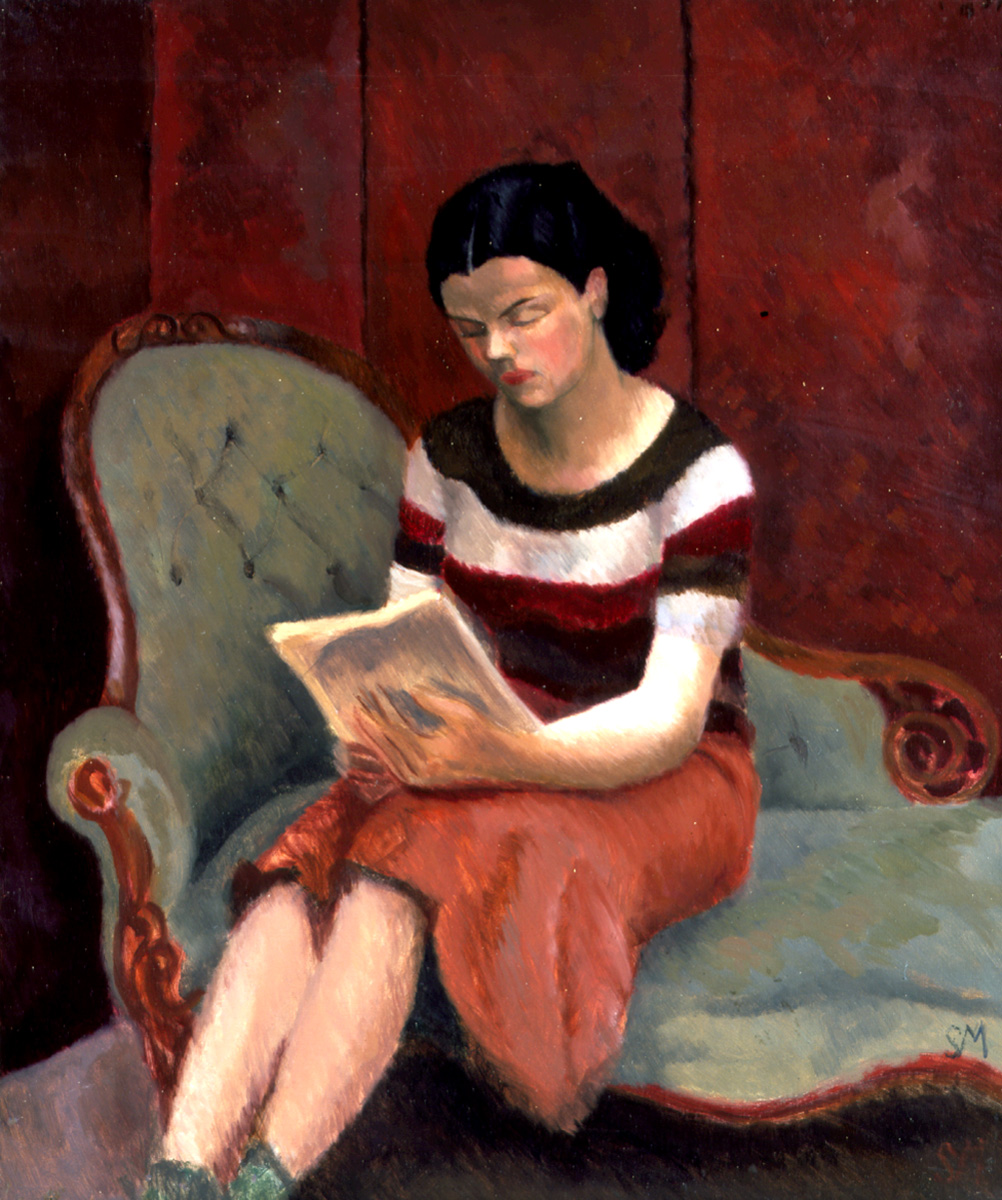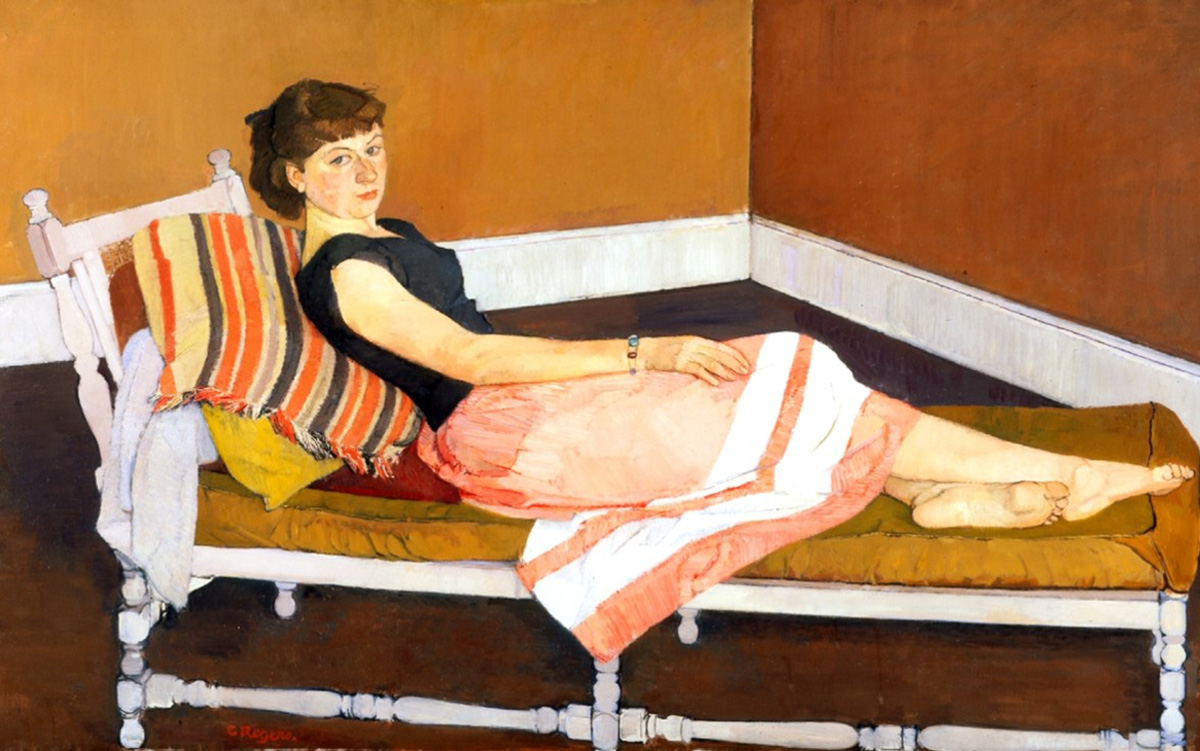The history and inspiration behind the Group’s forthcoming summer exhibition in Devon by Tim Craven LG
Thelma Hulbert Gallery, Honiton, 27 August – 30 October 2021
Curated by Tim Craven and Judith Jones (and Deborah Smith)

As a curator of exhibitions, I have always been interested in their genesis: the what, why and when of the initial spark of an idea. I am equally interested in the connections between walking and creativity. The great philosophers would walk and immerse themselves in specific landscapes to better formulate their ideas and theories. For the Land artists, Richard Long and Hamish Fulton walking is central to their practice. I think I have some of my best ideas while long distance walking – they simply appear. It may be something to do with the linear and regular bodily motion through a changing environment that frees up areas of the brain to become creative, though you certainly can’t force it, I’ve tried.
I had the idea for in Plain Sight while walking a section of the Cotswold Way, high on the escarpment above Gloucester the views west and north were wonderful. I can still remember the moment quite vividly. I had previously been thinking about how to persuade gallery visitors to really look properly at a work of art rather than a mere glance that has often become the norm, especially at exhibition openings where the chat and refreshments are enticing.
The simple and unifying premise of my fully formed idea was that each participating artist would be required to hide something of their choice in a new piece of work. The hidden element could be elementary, a trick of the eye, or complex in concept and execution, but it must be detectible in some way by the viewer: i.e. in plain sight. This precept is ideally suited to The London Group whose membership employ a diverse range of art practice in terms of philosophy, approach, medium and scale and was hopefully broad–brush enough to appeal to many if not all members. Thus each artist would create a unique, hidden element strategy and the viewer would have to look hard to solve each visual conundrum afresh. Art historical precedents include Holbein’s The Ambassadors, Roland Penrose’s Group of Hands and even Salvador Dali’s celebrated double image series. In the 1960’s, the Ukrainian artist Oleg Shuplyak, produced a number of landscapes that contained hidden, head portraits. I am sure there are many others.

Judith Jones and I, both elected to The London Group in 2015, had previously talked about curating a London Group exhibition together somewhere out in the south west as I live in Hampshire and Judith in Dorset. Through her recent exhibiting and contacts, Judith soon interested the Thelma Hulbert Gallery in Honiton with our proposal. We met Ruth Gooding, Director THG, in late November 2019 and made our pitch which seemed to go down well. Timing always plays a part in such matters and Ruth who was fairly new there was keen to explore and promote Thelma Hulbert’s life and career as an artist. Luckily her connections with The London Group we soon learnt were significant. Perhaps we could combine the two elements. Deborah Smith, who had previously worked at THG was currently researching and writing about Hulbert as part of her masters’ degree at Kingston University. Deborah would provide the historical information we required, and some of the 40 works by Hulbert held at the gallery would be enriched with relevant loans.
Thelma Hulbert was born in Bath in 1913 and was from a working class family. As soon as she could she moved to London to pursue her upwardly mobile and artistic ambitions. There she enrolled at the new Euston Road School of art in 1937, that had just been set up by William Coldstream, Victor Pasmore and Claude Rogers (all LG members), as a means of financial support for their painting. The school became synonymous with the objective technique of proportional measurement which Coldstream had previously invented with Pasmore while painting each other’s portraits. With its uniform and thin, vertical paintbrush work and verification measurement marks, it was an approach that was to dominate art schools after World War 2, including initially Camberwell School of art and subsequently the Slade both of where Coldstream taught until the 1960s. It is a very English style and was in part a reaction against the subjective flourish of the School of Paris. Interestingly it never seemed to generate an impact outside the British Isles.

Hulbert must have impressed her tutors and was probably in need of income, as she was appointed secretary to the school, and she especially became close friends with Rogers and his wife Elsie Few (also LG). Hulbert’s first professional exhibition was with The London Group in 1938 and Claude Rogers was The London Group President from 1952 – 66, a period hitherto described as a golden era for the Group. These historical links were thus pertinent to our exhibition project for both the THG and LG. Securing loans from public museums would be difficult in the current pandemic climate and costly, and also THG does not possess the environmental controls that would be stipulated, but a private collection we thought might be altogether more amenable to loan requests. When I had curated a delightfully unfashionable Euston Road School exhibition at Southampton City Art Gallery in 1999, I had borrowed a number of works from Claude’s son Crispin who lives north of Reading, so I suggested an approach to him and he responded generously. Deborah and I spent a fantastic day there in October last year enjoying Crispin’s and Kirsten’s kind hospitality in the art store above the garage (it was exactly as I had remembered it 22 years ago), and we selected works for the exhibition by Rogers, Few, Pasmore and Coldstream – and a Sickert as well, LG’s first mover and shaker – Sickert soon resigned in disapprobation of Wyndham Lewis’s Vorticists, like the bride at the church door, he bolted, but later re-joined – a typical Sickertian ploy.
Due to Covid 19 of course the show has been moved from pillar to post but we at last have definite dates and look forward to the project’s realisation in August which will include Judith’s workshops and my talk on the history of The London Group which was an absorbing lockdown project. Fingers crossed that all goes well and that it is a brilliant exhibition – we could all do with one!
Tim Craven LG, 2021

In Plain Sight: The London Group & Thelma Hulbert and her London Group Friends
27 August – 30 October 2021
Thelma Hulbert Gallery, Honiton
Elmfield House
Dowell Street
Honiton
Devon
EX14 1LX
London Group members: Moich Abrahams, Wendy Anderson, Victoria Arney, Bryan Benge, Paul Bonomini, Clive Burton, Peter Clossick, Tim Craven, Sandra Crisp, John Crossley, Philip Crozier, Mark Dickens, Beverley Duckworth, Mark Dunford, Angela Eames, Eric Fong, Cadi Froehlich, Susan Haire, Alexandra Harley, Julie Held, Martin Heron, Alexander Hinks, Chris Horner, Gillian Ingham, Sam Jarman, Annie Johns, Judith Jones, Jockel Liess, Amanda Loomes, Jeff Lowe, Bethany Marett, Charlotte C Mortensson, Darren Nisbett, Janet Patterson, Michael Phillipson, Christopher Poulton, Victoria Rance, David Redfern, Suzan Swale, Almuth Tebbenhoff, Paul Tecklenberg, Philippa Tunstill, Bill Watson, Neil Weerdmeester, Erika Winstone, David Wiseman, Carol Wyss.

